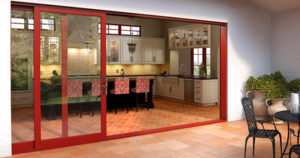
One of the main reasons why you may find yourself choosing window replacements at any given time is a need to have more energy efficient windows. Energy efficiency is a major issue in many houses both old and new. But it’s an especially big problem among windows and doors. This is because a great deal of energy can escape through a drafty window or door, and for that matter, a lot of them have those types of drafts without homeowners even realizing it until they start to notice that their energy bills are higher than they should be.
Fortunately, there are energy efficient replacement windows and doors on the market. But the question for many may be how to find these types of door and window replacements, as well as how they really differ from typical windows and doors. They don’t necessarily look very different to the naked eye. So where is the difference? Let’s find out.
How Do I Know If I’m Really Buying Energy Efficient Windows and Doors?
One of the main ways in which you can tell that you are buying energy efficient window and door replacements is if they are Energy Star labeled. The Energy Star labeling program is actually a lot newer than you might think; it didn’t begin until 1992, and many people remain unaware of it today. This labeling program, however, is meant to make your hunt for energy efficient door and window replacements much simpler.
If doors and windows are Energy Star labeled, then you can know that they have met the strict requirements of the Environmental Protection Agency, or the EPA. Usually, the EPA’s performance standards will be based on issues like the amount of glazing on a fixture, or the thickness of the glass involved.
Additionally, there are different climate zones attached to different areas. Look up your climate zone while you are shopping for windows and doors. The Energy Star label of the fixture should reflect the climate zone for which it is suited. As long as you’re buying a window or door suited for your climate zone, you should be set to go.
What Makes Windows and Doors Energy Efficient?
You may already have energy efficient doors and windows, but they’ve simply been damaged and are no longer functionally energy efficient. But despite the fact that energy efficient windows and doors look just like ordinary windows and doors, there is a big difference between energy efficient door and window replacements, and replacements that are not energy efficient.
For doors, this will typically lie in the glazing. And energy efficient glazing, as well as a door that is well-fitted and made to prevent drafts, will typically keep a door from allowing energy to escape your home. Windows can be a bit more complex.
One issue to consider for both door and window replacement is the U-factor. The U-factor is the amount of heat that can transfer through a material. Materials with lower U-factors will be less permeable for heat. Heat will transfer through them more slowly, and therefore they are better insulated and more energy efficient. When a window has a low U-factor, you will potentially need to worry less about window treatments as back up.
You need to pay attention to your window’s framing as well. Windows can typically be set in wood frames, aluminum frames, or vinyl frames. Due to their expanding and contracting tendencies, wood frames are usually the least energy efficient. Aluminum is easily heated, and therefore the heat transfers outdoors more easily, making window replacements with aluminum frames less energy efficient. If vinyl frames are insulated, they are often the best options.
When windows are single pane, they are less insulated and therefore less energy efficient. Therefore buyers of window replacements should look for options that are double paned if they want energy efficiency.
There is much more for you to consider as you decide which door and window replacements you need to invest in. But energy efficiency is perhaps one of the biggest factors to consider. Don’t dismiss the importance of saving energy, because saving energy means saving money.




